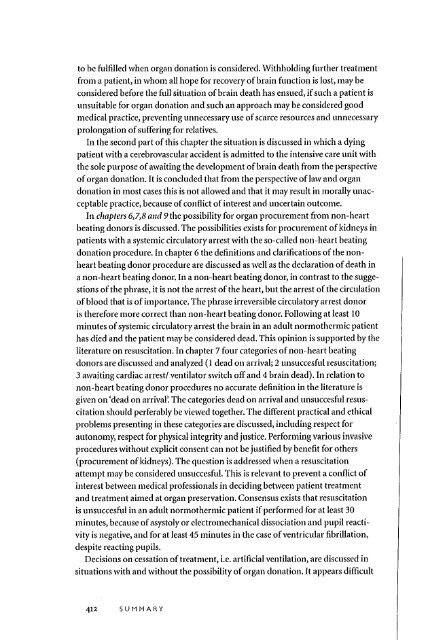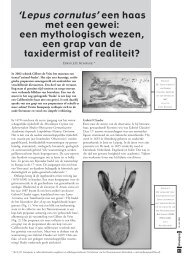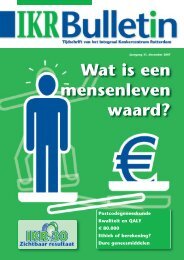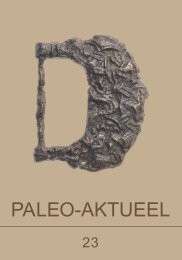Geven en nemen - dr Erwin JO Kompanje
Geven en nemen - dr Erwin JO Kompanje
Geven en nemen - dr Erwin JO Kompanje
You also want an ePaper? Increase the reach of your titles
YUMPU automatically turns print PDFs into web optimized ePapers that Google loves.
to be fulfilled wh<strong>en</strong> organ donation is considered. Withholding ftuther treatm<strong>en</strong>t<br />
from a pati<strong>en</strong>t, in whom all hope for recovery of brain function is lost, may be<br />
considered before the ftllI situation ofbrain death has <strong>en</strong>sued, if such a pati<strong>en</strong>t is<br />
unsuitahle for organ donation and such all approach may be considered good<br />
medical practicc, prev<strong>en</strong>ting unnecessary use of scarce resources and unnecessary<br />
prolongatiol1 of suffering for rclatÎvcs.<br />
In the second part of this chapter the situation is discussed in which a dying<br />
pati<strong>en</strong>t with a cerebrovascular accid<strong>en</strong>t is admitted to the int<strong>en</strong>sive care unit with<br />
the sole purpose of ",vaiting the developm<strong>en</strong>t ofhrain death from the perspective<br />
of organ donation. It is concluded that from the perspective of law and organ<br />
donation in most cases this is not allowed and that it mar result in morally unacceptable<br />
practice, because of conflict of interest and uncertain outcome.<br />
In clmpters 6,7,8 atld 9 the possihility for organ procurem<strong>en</strong>t from non-heart<br />
beating donors is discussed. The possibilities exists for procurem<strong>en</strong>t of kidneys in<br />
pati<strong>en</strong>ts with a systemic circulatory arrest with the so-called non-heart beating<br />
donation procedure. In chapter 6 the definitions and clarifications of the nonheart<br />
beating donor procedure are disctlSSed as weil as the declaration of death in<br />
a non-heart beating donor. In a non-heart beating donor) in contrast to the suggestions<br />
of the phrase) it is not the arrest of the heart) but the arrest of the circulation<br />
of blood that is of importance. The pluase irreversible circulator}' arrest donor<br />
is therefore more correct than non-heart beating donor. Following at least 10<br />
mimltes of s}'stemic circulatory arrest the brain in an adult normothermic pati<strong>en</strong>t<br />
has died and the pati<strong>en</strong>t may be considered dead. This opinion is supported by the<br />
literature on resuscitation. In chapter 7 four categories of non-heart beatitlg<br />
donors are discussed and analyzed (I dead on arrival; 2 unsuccesful resuscitationj<br />
3 awaiting cardiac arrest! v<strong>en</strong>tilator switch off and 4 brain dead). In relation to<br />
non-heart beating donor procedures no accurate definition in the literature is<br />
giv<strong>en</strong> on (dead on arrivar. The categories dead on arrival and unsuccesful resuscitation<br />
should perferahly be viewed together. The differ<strong>en</strong>t practical and ethical<br />
problems pres<strong>en</strong>ting in these categories are discussed) including respect for<br />
autonomy, respect fol' physical integrity and justice. Perfonning various invasive<br />
procedures without explicit cons<strong>en</strong>t can not he justified by bellefit for others<br />
(procurem<strong>en</strong>t ofkidneys). The question is ad<strong>dr</strong>essed wh<strong>en</strong> a resuscitation<br />
attempt may be considered unsuccesful. This is relevant to prev<strong>en</strong>t a conflict of<br />
interest behve<strong>en</strong> medical professionals in deciding behve<strong>en</strong> pati<strong>en</strong>t treatm<strong>en</strong>t<br />
and treatm<strong>en</strong>t aimed at organ preservation. Cons<strong>en</strong>sus exists that resuscitation<br />
is unsuccesful in an adult normothermic pati<strong>en</strong>t if perfonned for at least 30<br />
minutes) because of asystoly or electromechanical dissociation and pupil reactivit}'<br />
is negative) and for at least 45 minutes in the case of v<strong>en</strong>tricular fibrillation)<br />
despite reacting pupils.<br />
Decisions on cessation of treatm<strong>en</strong>t) i.e. artificial v<strong>en</strong>tilation) are discussed in<br />
situations with and without the possibility of organ donation.lt appears difficult<br />
412 5 U M MAR Y








